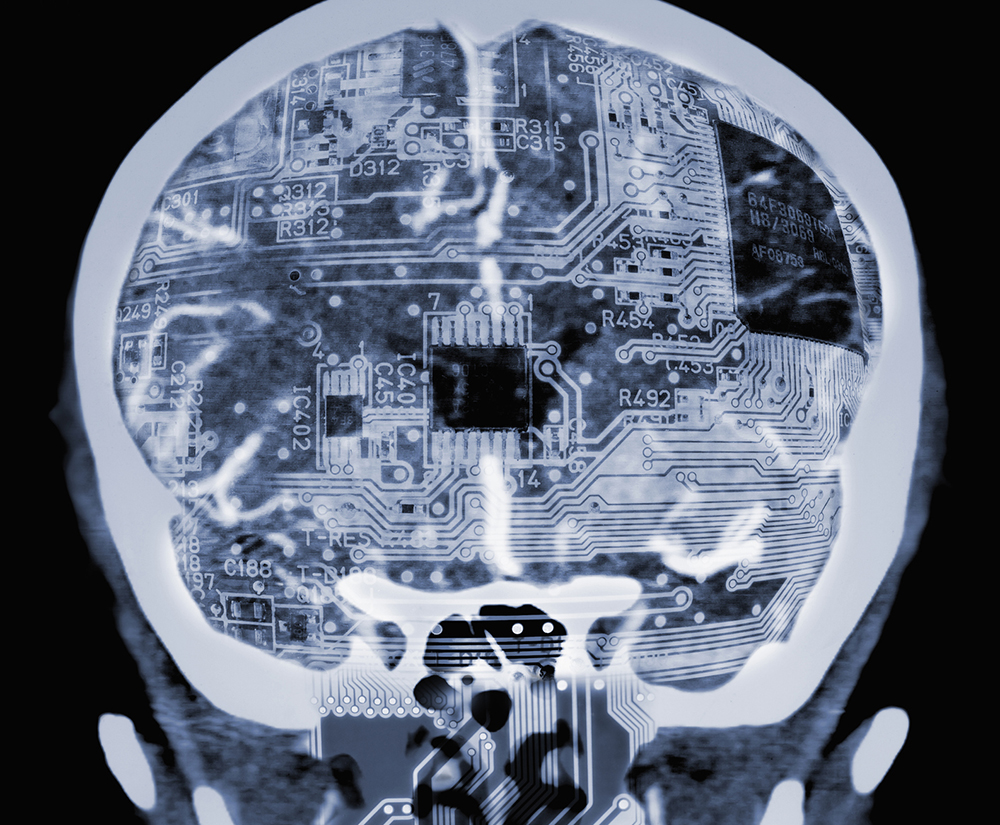
January 9, 2020

NUMBERS GAME
To get a sense of how much data is coursing through the modern world, consider this: A single mammogram image contains more information than the physical phone book (remember phone books?) of Berlin, Germany — which happens to be the home country of Dr. Mathias Goyen, GE’s chief medical officer in Europe. Goyen and his team are captivated by the possibilities data offers for improving healthcare. One of the most promising areas is artificial intelligence algorithms that can read medical scans in a snap, helping radiologists obtain clearer pictures and triage the most pressing cases. Is this kind of tech taking the place of doctors? Nope — it’s freeing them up to spend time with patients. Artificial intelligence, Goyen said, has “made medicine ‘human’ again.”
Feeling good: In fact, the sector is understaffed. “Globally, we’re about 7 million people short, and by 2035, this will be around 14 million,” Goyen said. Healthcare is moving toward a hybrid model where AI complements clinicians — sort of like autopilot systems do in aircraft, freeing humans up to do higher-value work. Goyen was an adviser on a study published last month by MIT Technology Review with GE Healthcare, which reported that the industry is already feeling the positive effects of AI. Nearly half of healthcare professionals surveyed in the U.S. and U.K. said AI is boosting their ability to spend time with and provide care for patients.
Learn more here about how AI is helping physicians do their jobs.
A CLEARER PICTURE EMERGES
Magnetic resonance, or MR, is a crucial form of medical imaging, allowing docs to peer deeply into the body. Those large, tube-shaped machines produce strong magnetic fields that jiggle hydrogen atoms in the body’s water and fat. Radio signals emitted by the atoms can then be detected by a scanner and transformed into digital images. Though invaluable, those images could be yet sharper — the signals from the body compete with background thermal and electric noise, which can conceal problems in images and deceive the eyes of even well-trained physicians. Last month GE Healthcare introduced technology that can help cut through that extra information: AIR Recon DL, artificial intelligence software designed to separate signal from noise without compromising diagnostic quality or increasing scan time.
A resounding achievement: GE built the software, currently 510(k) clearance pending with the U.S. Food and Drug Administration, by using its Edison AI platform to feed the computer algorithms with tens of thousands of images. The software uses some 100,000 filters that analyze clinical images to identify likely patterns of noise and other unwanted effects. The software’s neural network is also designed to fill in blank spots in the scan with plausible anatomical detail. Physicians can easily see the potential in a scanning system that yields up faster, sharper images: Paris radiologist Dr. Pascal Roux, for instance, said the software will allow him to add up to six more patients in a 12-hour day.
Learn more here about GE Healthcare’s AIR Recon DL and the brilliant AI platform it was built on.
INTERNET OF POSSIBILITIES
The smart fridge is often used as the canonical example of the internet of things: It texts you when you’re low on milk! But a new article by Ericsson senior vice president Åsa Tamsons, writing for the World Economic Forum, argues that the potential of such tech goes far beyond the home. Take the global problem of food waste. A third of the world’s food gets lost between farm to fork, amounting to around $750 billion in losses annually. IoT technology can help track refrigerated containers, alerting operators to things like power outages and equipment failure so they can be swiftly dealt with — and the food can get to where it needs to go.
The next revolution: According to Tamsons, the crux of the “Fourth Industrial Revolution” is 5G. “The 4G network responds to our commands in just under 50 milliseconds; with 5G it will take around one millisecond — 400 times faster than the blink of the eye,” she writes. “For a world that is increasingly dependent on the internet to function, a reduction in time delay is critical.” Food waste is just the tip of the iceberg. Supply chain management, in general, is set to improve, as is road safety, as is the Earth’s climate, Tamsons writes: “Digital technologies such as 5G and IoT are predicted to reduce global emissions by up to 15% by 2030, which will be critical in combatting climate change.”
How? Learn more here. And click here for an example of how the industrial internet of things is already improving the way GE does business.
— VIDEO OF THE WEEK —
Engineers are building software that could allow operators to harvest more power from their wind farms.
— QUOTE OF THE DAY —
“Autopilot hasn’t replaced human pilots; it’s just expanded their capabilities. It’s the same with healthcare.”
— Dr. Mathias Goyen, GE’s chief medical officer in Europe
Quote: GE Reports. Image: Getty Images.
ENJOY THIS NEWSLETTER?
Please send it to your friends and let them know they can subscribe here.




